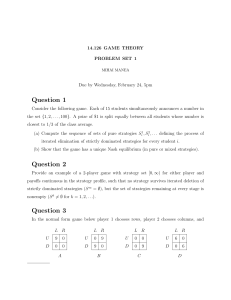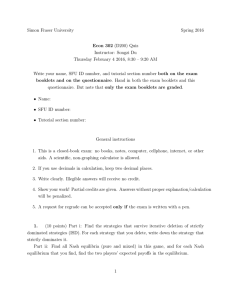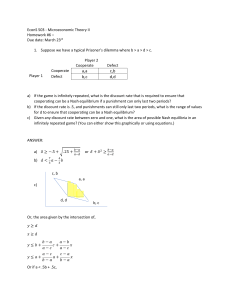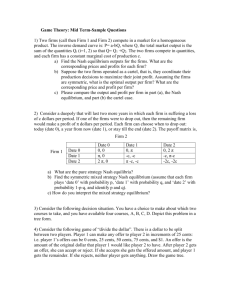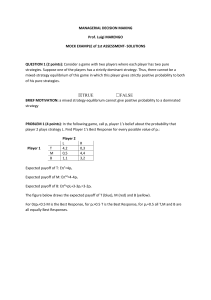Computational Game Theory
advertisement
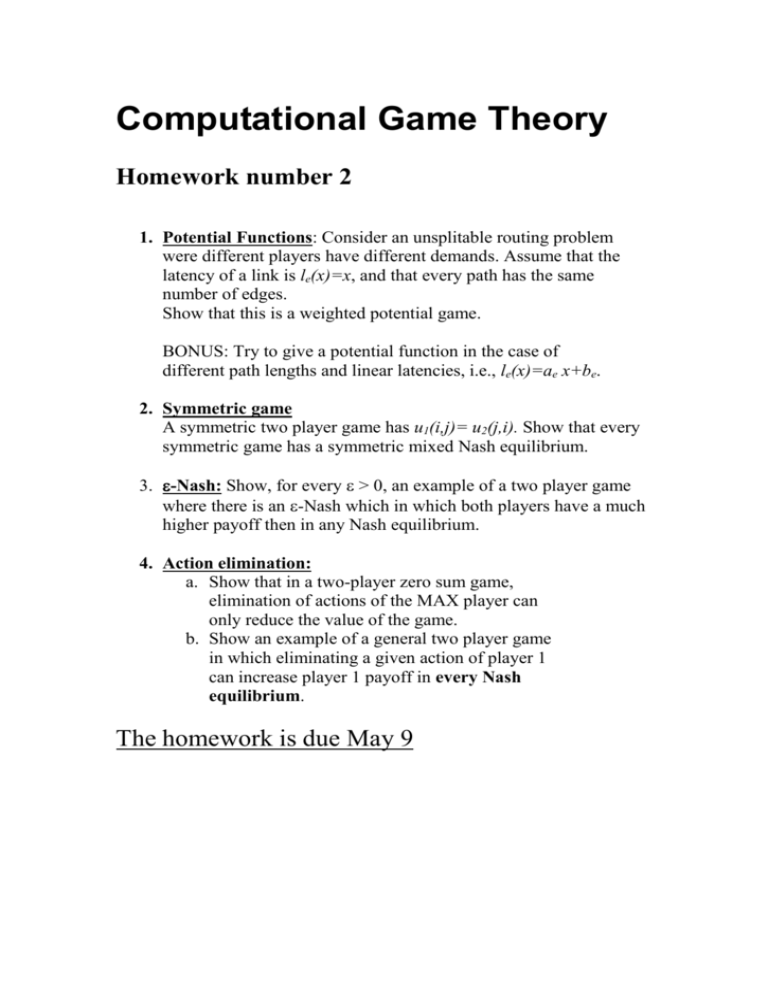
Computational Game Theory Homework number 2 1. Potential Functions: Consider an unsplitable routing problem were different players have different demands. Assume that the latency of a link is le(x)=x, and that every path has the same number of edges. Show that this is a weighted potential game. BONUS: Try to give a potential function in the case of different path lengths and linear latencies, i.e., le(x)=ae x+be. 2. Symmetric game A symmetric two player game has u1(i,j)= u2(j,i). Show that every symmetric game has a symmetric mixed Nash equilibrium. 3. -Nash: Show, for every > 0, an example of a two player game where there is an -Nash which in which both players have a much higher payoff then in any Nash equilibrium. 4. Action elimination: a. Show that in a two-player zero sum game, elimination of actions of the MAX player can only reduce the value of the game. b. Show an example of a general two player game in which eliminating a given action of player 1 can increase player 1 payoff in every Nash equilibrium. The homework is due May 9





